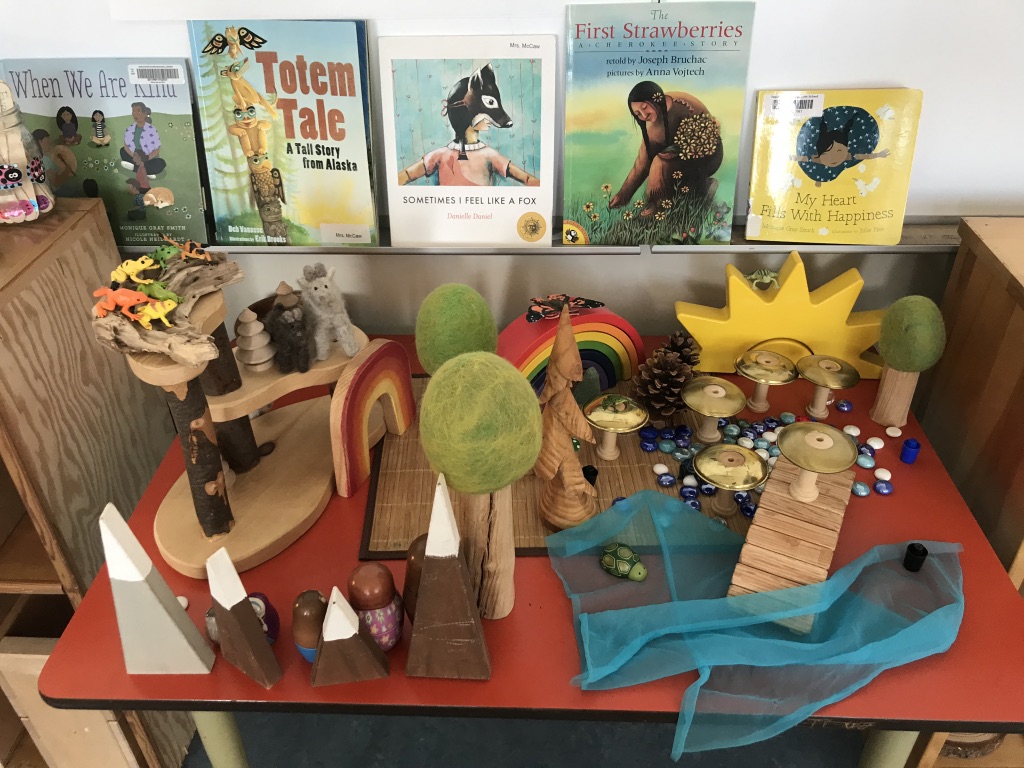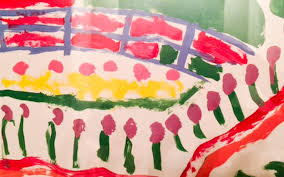 Mayra Mendez, PhD, LMFT, a licensed psychotherapist and program coordinator at Providence Saint John’s Child and Family Development Center in Santa Monica, California, tells Healthline, “Play is important because it provides a primary foundation for learning, exploring, problem-solving, and building an understanding of the world and your role within it.”
Mayra Mendez, PhD, LMFT, a licensed psychotherapist and program coordinator at Providence Saint John’s Child and Family Development Center in Santa Monica, California, tells Healthline, “Play is important because it provides a primary foundation for learning, exploring, problem-solving, and building an understanding of the world and your role within it.”These are my Kindergarten centre suggestions that meet my criteria and are kid approved. I also wanted to mention that when working with early learning centres I use the same criteria to curate materials.
In our space art and both unit and hollow blocks are the two largest and most used centres. They each take up about a third of the room and most of the other centres are table activities, as well as the home centre and light table. The third space is our gathering area for stories, songs, movement and conversations.
Block Play - I purchased as many unit blocks and accessories as I could afford over 5 years making building the collection my budget priority. During this time I supplemented play with loose parts, art and story play. I had a collection of cans, boxes and cardboard roof boards to extend block building while the collection grew. Now my goal is to enrich the block play by adding accessories like play silks, gem blocks and vehicles.
This open ended centre is the most important and most popular in my program. The NAEYC lists social emotional growth, object permanence and creativity as three of the top ten reasons to include block play in every classroom. If you would like to read their position paper follow the link here NAEYC
I now have a large collection of unit blocks, because I want to ensure that groups of children can participate in block play. I set aside a large space to spread out and build side by side, together or on their own. They are all used every day and I continue to build this collection each year. either with more blocks or block play accessories. If you are interested in more information please follow this link to my recent YouTube video on block play. Block Play.
I keep an updated classroom inventory with a have, want and wish. This means that I know what the next purchase will be and I am prepared for sales. For example, when I was collecting unit blocks the seller had a January sale with 15% off and free shipping. For blocks shipping is 15% of the cost so it was a huge saving for me. I was fundraising at the time as I am alway careful not to use our family money for these important purchases.
My current want is a set of Bauspiel castle blocks and Grimms Rainbow Forest (pictured above). Last year I borrowed these beautiful castle blocks from a colleague on mat leave and they were a popular centre and a perfect addition to block play. I loved the weight and texture of the castle blocks and how they integrated perfectly into our block play. Trying out a new centre is a great way to determine if it is a good fit for your students and extend what materials you already have.
Constructing - This includes Magnet Tiles, Marble Chute and Duplo and or Lego. These are also open ended materials and offer opportunities to create on a smaller scale than unit blocks. I choose a wooden marble chute with 72 pieces so that it has endless design options, can support a small group and easy to store in one bin.
Imagination and Creativity - Small World Play, Home Centre, Doll House Family Play and Loose Parts Play. These centres offer opportunities for students to tell their own stories drawing upon the life experiences and imagination. This year we actually ended up with two small world play tables because it was so beloved. Often Loose Parts are moved to blocks, home centre and small world play by the children to extend their creativity. I also experimented with tinker trays and created three tinker trays of complimentary loose parts for children to explore and tinker with.
Sensory - water, sand, playdoh, kinetic sand, loose parts play, light table. We know that children learn with their senses and in Kindergarten we offer multiple experiences using a variety of materials. This year our water play turned into potion play partway through the year with a hint of colour, bubbles and gems. Jars, magic wands (from the party store) and beautiful little cream jars from the thrift store rounded out the materials.
In our nature program they are greeted with forest smells, sounds and surfaces each morning.
Art- the paint easel was donated to our classroom from another school as a thank you for some professional inservice, a variety of painting experiences such as mirror, paper, watercolour, paint sticks....collage tinker tray and potters clay. Art engages the children's senses and helps with the development of cognitive, social emotional, self esteem and creativity. This is an independent centre and new materials are introduced and practiced before they are placed on the shelves.
Puzzles and Cooperative Games-I usually put two puzzles on the shelves and two games. Sometimes I do a soft start with puzzles and bring more into in the room and the same with games. These centres develop memory skills as well as the ability to solve problems. This occurs more frequently in the fall as the children are developing independence and stamina.
Literacy and Math Play - this activities designed for the children to grow their skills through guided play are also available as play centres.
I save and buy the best materials that I can afford because I want it to last and also because often there is a sensory benefit such as a wooden chutes, blocks or castle building materials. I want to offer enough materials so that the children can work in groups and also that there is a variety of choices but not so many that the children become overwhelmed or our classroom shelves too full.
What centres are most used in your early learning classroom?








No comments
Post a Comment
Note: only a member of this blog may post a comment.